Icy Sedgwick's Blog, page 59
October 26, 2015
3 Ghost Stories Perfect For Halloween
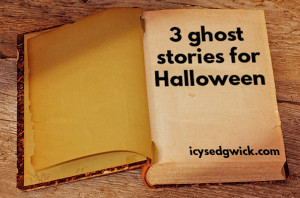 The ghost has quietly sneaked into the twenty first century, making its presence felt as the Woman in Black stalked Daniel Radcliffe around a peeling Edwardian pile back in the 2012 movie by Hammer Films. I’m not talking about the Paranormal Activity model of low-budget demonic visitations dressed up to look like ghosts – I’m talking about supernatural spectres capable of bending space and time to suit their own spiritual ends.
The ghost has quietly sneaked into the twenty first century, making its presence felt as the Woman in Black stalked Daniel Radcliffe around a peeling Edwardian pile back in the 2012 movie by Hammer Films. I’m not talking about the Paranormal Activity model of low-budget demonic visitations dressed up to look like ghosts – I’m talking about supernatural spectres capable of bending space and time to suit their own spiritual ends.
This year we had the Poltergeist remake, which wasn’t as terrible as I’d expected, and most recently we’ve had the resounding success of Guillermo del Toro’s Crimson Peak. According to the Guardian, the ghost is back in literature in a big way too, with Gothic blockbusters coming thick and fast. Good old-fashioned chills abound!
So here are three ghost stories perfect for Halloween thrills!
‘The Signal-Man’ by Charles Dickens
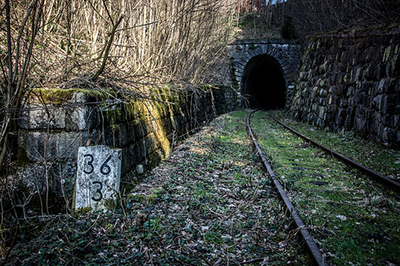 Possibly the quintessential ghost story, ‘The Signal-Man’ is guaranteed to raise the hairs on your neck if you’re lucky enough to see/hear it performed – I saw it last year at Belsay Hall and you could have heard a pin drop.
Possibly the quintessential ghost story, ‘The Signal-Man’ is guaranteed to raise the hairs on your neck if you’re lucky enough to see/hear it performed – I saw it last year at Belsay Hall and you could have heard a pin drop.
‘The Signal-Man’ tells the tale of a hapless railwayman haunted by strange things that he has seen during the course of his duties. By telling his story to a passing gentleman, he ensures that the haunting will continue…and now Dickens has passed it to you too…
You can read the full text here.
‘The Yellow Wallpaper’ by Charlotte Perkins Gilman
 This short story doesn’t exactly deal with ghosts of the usual variety; rather it deals with a haunting of a more psychological nature.
This short story doesn’t exactly deal with ghosts of the usual variety; rather it deals with a haunting of a more psychological nature.
It’s a good reminder that not all ghosts float about rattling chains or going bump in the night.
Published in 1892, this short but exceedingly creepy story will have you looking at your walls in a very different way!
You can read the full text here.
‘The Mezzotint’ by MR James
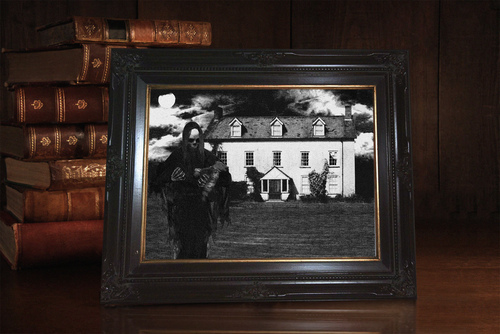 No list of ghost stories would be complete without the inclusion of MR James, and ‘The Mezzotint’ is a particular favourite of mine.
No list of ghost stories would be complete without the inclusion of MR James, and ‘The Mezzotint’ is a particular favourite of mine.
As always, dusty and dry academics find their safe world interrupted by the weird and the wonderful, and this time it is the appearance of a mysterious mezzotint that appears to change every time they look at it. Can they work out what is going on in the picture?
You can read the full text here.
Have you read any of these? Which are your favourites and why?
The post 3 Ghost Stories Perfect For Halloween appeared first on Icy Sedgwick's Cabinet of Curiosities.
October 23, 2015
Halloween Season – Trick or Treat
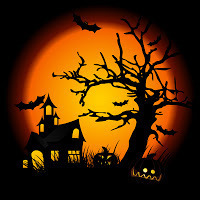
I walk along the street towards the next house. Fake cobwebs drape across the porch, and several grinning pumpkins light my way up the path. Further down the street, giggling children run from house to house. They stop to compare candy collections on the sidewalk. I chuckle to myself, a deep rumble inside my hood.
I ring the doorbell. Moments later, an elderly woman with rollers in her hair comes to the door – Mrs Phelps, if memory serves. Horror crosses her face as she takes in the black cloak and scythe.
“Trick or treat!”
Mrs Phelps spots my candy bag, an upturned skull on a leather thong, and a glorious smile appears among the wrinkles of her face. She picks up the dish of candy beside the door and offers it to me. I reach out and dip my bony fingers into the bowl, selecting a miniature Mars bar. I can’t resist Mars bars, and this is the one time of year I can get them.
“Happy Halloween, dear!”
“Thank you. Likewise, I’m sure.” I dip my head in greeting since she can’t see my face inside my hood.
I turn to leave. Before she closes the door, I hear her tell her husband how lifelike some of the costumes have been this year. A smile erupts on my hidden face.
I visit more houses, collecting candy from smiling grandmothers and truculent fathers. The old man in the rickety old house on Claymore Street can’t afford candy so he gives me an apple instead. I make a mental note to postpone my next visit to him.
I reach Winchester Street and head for the first house. Two small children stand on the porch. The girl is dressed as Princess Fiona from Shrek and the boy is dressed as a werewolf. This house bears no Halloween decorations, and a couple watch TV in an upstairs room. They ignore the children ringing the doorbell.
I head up the path to tell the children to try another house. Before I reach them, the front door flies open and a woman stands framed in the doorway. Fury burns in her eyes. Ms Wakefield.
“Trick or-” begin the children.
“Go away! Every year it’s the same, you all descend on the neighbourhood like locusts, demanding we hand over whatever you want or you’ll play some kind of vicious prank! It’s nothing but begging, so no, I won’t give you candy! Now get off my porch!”
The little girl bursts into tears. The little boy stares at the woman, frozen halfway between leaving and staying.
“Oh stop your whining and piss off. Go and beg from someone else!”
She catches sight of me hidden in the shadows at the bottom of the path.
“You can f**k off as well! Aren’t you a little old to be trick or treating, or do you just do it for the kids?”
She slams the door so hard one of her insipid plaques falls off the wall. The crash prompts a fresh wave of tears from the little girl.
The little boy leads her down the path. I hunker down and hold out my skull of sweets. They stop a few feet away, the girl hiding behind the boy. The boy stares at my skeletal hand. His name is Greg, but I forget his surname.
“I’m sorry she was so mean.”
“She made Bethany cry,” says Greg.
“I know, and that was horrible of her. Take a couple of my sweets, and head on home.”
“Mom says we shouldn’t take candy from strangers,” says Greg.
“Mom is quite right but just think of this as the candy the nasty lady could have given you.”
Greg still hesitates but Bethany darts forward. She grabs the apple and disappears behind the boy again. She mumbles something about not wanting to rob me of candy.
“Are you sure?” asks Greg.
“Yes.”
Greg chooses the smallest piece of candy in the skull. They nod their thanks and run away down the street. I turn back to the house and stalk up the path. The moonlight glints on the blade of my scythe.
Looks like the lady of the house chose a trick after all.
The post Halloween Season – Trick or Treat appeared first on Icy Sedgwick's Cabinet of Curiosities.
October 18, 2015
3 Zombie Films That Don’t Involve Brains
I’m continuing my Halloween season here at the Cabinet of Curiosities with a focus on the zombie. It’s become something of a cultural icon in a way that few movie monsters have, but a lot of the contemporary depictions of the zombie are rooted in George Romero’s Night of the Living Dead (1968), which conveniently ignores the folklore roots of the zombie, and turns this shambling shell of voodoo magic into a brains-munching cliché.
So today I’m going to highlight the original three zombie films which are well worth a watch!
White Zombie (1932)
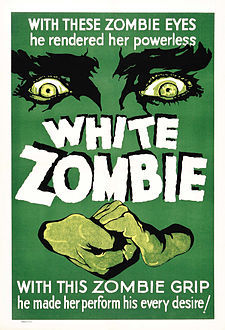 White Zombie was an independent film that starred Bela Lugosi as the villainous voodoo master, Murder Legendre. It tells the tale of a couple who arrive in Haiti, Neil and Madeleine. Madeleine catches the eye of the local plantation owner, Charles, and he tries to enlist Murder’s help in getting her to marry him instead of Neil. Instead Murder turns Madeleine into a zombie (as you do), and Neil races to free his beloved.
White Zombie was an independent film that starred Bela Lugosi as the villainous voodoo master, Murder Legendre. It tells the tale of a couple who arrive in Haiti, Neil and Madeleine. Madeleine catches the eye of the local plantation owner, Charles, and he tries to enlist Murder’s help in getting her to marry him instead of Neil. Instead Murder turns Madeleine into a zombie (as you do), and Neil races to free his beloved.
Eagle-eyed viewers might spot sets that were rented from previous Universal films, including Dracula, Frankenstein and The Cat and the Canary. While it didn’t achieve the same critical acclaim as other horror films of the time, most notably due to its wonky acting, it’s gone on to become something of a cult favourite, even inspiring the name of metal band White Zombie.
You can actually watch the whole film here!
I Walked With A Zombie (1943)
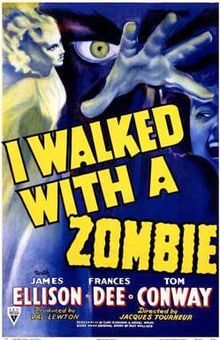 Val Lewton’s atmospheric classic tells the story of Betsy, a Canadian nurse charged with the care of Jessica, the catatonic wife of a sugar plantation owner. In attempting to unravel the root of Jessica’s condition, Betsy uncovers a mess of adultery, alcoholism, calypso and voodoo. It’s certainly an interesting take on voodoo practices, although it does raise some problematic questions around race.
Val Lewton’s atmospheric classic tells the story of Betsy, a Canadian nurse charged with the care of Jessica, the catatonic wife of a sugar plantation owner. In attempting to unravel the root of Jessica’s condition, Betsy uncovers a mess of adultery, alcoholism, calypso and voodoo. It’s certainly an interesting take on voodoo practices, although it does raise some problematic questions around race.
The RKO films instigated by Val Lewton often remained ambiguous, never explaining events as either being rational or supernatural, and I Walked With A Zombie is no different. It’s entirely possible that Jessica IS a zombie…or her illness could have a perfectly rational cause, and those around her are operating under a delusion.
You can watch the trailer here!
Plague of the Zombies (1966)
 This Hammer Horror classic is my favourite of the pre-Romero zombie films for many reasons, not least its pacey plot and gorgeous set design. It tells the story of a Cornish village where people are dying and no one knows why. The local doctor sends for Sir James Forbes, played by Andre Morell, to try and uncover what’s happening. When they realise that empty coffins are being buried, they know something is afoot, and it all leads to the tin mine of the local squire, played by John Carson.
This Hammer Horror classic is my favourite of the pre-Romero zombie films for many reasons, not least its pacey plot and gorgeous set design. It tells the story of a Cornish village where people are dying and no one knows why. The local doctor sends for Sir James Forbes, played by Andre Morell, to try and uncover what’s happening. When they realise that empty coffins are being buried, they know something is afoot, and it all leads to the tin mine of the local squire, played by John Carson.
Naturally Sir James has to unravel exactly what the squire is doing, and why, in order to end the plague and rescue his daughter from the squire’s evil clutches. Being a Hammer film, this is all happening in the 1860s, and it was actually shot back-to-back with another B-feature, The Reptile, which was also set in Cornwall and dealt with strange influences being brought back from the mysterious world of ‘abroad’.
If this trailer doesn’t make you want to watch it, nothing will.
What all three films have in common is the voodoo element – no viruses, radiation, or mutations here. All of the zombies can be, and are, controlled by a single figure, turning them into weapons to be wielded by this nefarious villain. Obviously this brings an element of closure to the stories that is missing from the later films – you only have to stop one character, rather than a rampaging horde.
In some ways I think it’s a pity that the contemporary narratives all rely on blood, guts and brains, since these earlier films managed to generate a degree of atmosphere and just plain weirdness that you don’t get in films like World War Z or Dawn of the Dead. Then again, it’s difficult to do these zombies for fancy dress!
Have you seen any of these classics? I’ve also got a poll here for next week’s post – what’s your favourite horror monster? Vote now!
The post 3 Zombie Films That Don’t Involve Brains appeared first on Icy Sedgwick's Cabinet of Curiosities.
October 16, 2015
Halloween Season – Halloween Night
 “Mom, why don’t we have a pumpkin for Halloween?”
“Mom, why don’t we have a pumpkin for Halloween?”
Michael looked out the window at the houses across the street. Each one boasted a lit jack o’lantern by the front door, the flickering candlelight throwing jagged faces across their front lawns.
“I don’t want any of the dead finding their way back here,” said Nancy.
“What about Dad?” asked Michael.
“Especially your dad.” Nancy muttered as she turned back to the kitchen counter where dinner lay in various parts across an array of plates.
Michael and his brother Jason clambered onto the sofa, Michael dressed as Woody the Cowboy and Jason as Buzz Lightyear. Their cousin Freddie would be over soon to take them trick or treating. She didn’t agree with the commercialism that had crept into the holiday, as the tradition of the poor offering to say prayers for the dead in exchange for soul cakes from richer households was perverted into children begging for candy. Still, the boys being out of the house would give Nancy time to make her preparations.
The doorbell rang. Jason leapt off the sofa and ran across the room. He yanked on the handle and pulled the front door open.
“Honey, I’m hoooooome.”
Jason squealed and Nancy whirled around to see Patrick framed in the doorway. Dirt clung to the tattered remains of his burial suit, and grass stuck to the patches of skin worn away through the rotting process. A gnarled hand reached out for Jason, but the boy ducked out of his grasp and threw himself across the room to join his elder brother.
“You didn’t leave a light out, honey.” Air rasped across decayed vocal chords in a ghastly imitation of speech.
“Boys, go fetch your buckets from the laundry room.” Nancy backed slowly across the kitchen.
“Aw, don’t you wanna see your dad?” Patrick turned his dead gaze to Michael and Jason, but they dashed towards the laundry room before he could lurch two steps across the carpet. They passed Nancy and dived into the small laundry room next to the kitchen. Nancy had stashed their candy collection buckets in there anyway, so the ruse wasn’t a complete lie. She just didn’t want them to see what she was about to do next.
“You can’t keep your kids from their dad, Nance. It isn’t healthy.” Patrick continued to rasp as he forced his feet forward two more steps.
Nancy darted forward and snatched up the shotgun from its resting place against the door jamb, kicking closed the door to the laundry room as she did so. Patrick’s dead eyes lit up with a terrible understanding as she raised the shotgun and pulled the trigger.
The boys cried out in the laundry room, but they left the door closed. The blast sent shards of bone and tattered scraps of cloth and flesh out of the open front door and across the front path. Nancy glared at the corpse as it swayed, before landing with a wet thump on the carpet. Patrick had never been a tidy husband, but now he’d left a dirty great stain on her living room floor.
She heard voices at the back door, and realised Freddie had arrived. His back yard backed onto hers, and he preferred to cut across the lawn instead of going the long way around. She opened the back window and called out to her nephew.
“Could you take the boys out now? Just cut around the side of the house.” Nancy gave him her biggest smile. The teenager, dressed as Wyatt Earp, gave his lop-sided grin, and led the boys across the garden.
Nancy ducked back inside and pulled what was left of Patrick into the house, closing the front door so the boys wouldn’t see. Their father would be gone by the time they got back – and this time, he’d be gone for good.
The post Halloween Season – Halloween Night appeared first on Icy Sedgwick's Cabinet of Curiosities.
October 12, 2015
What 5 Items might help you survive a Zombie Apocalypse?
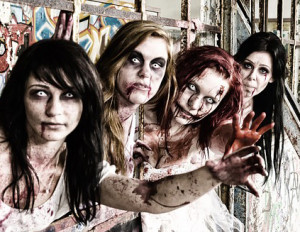 It’s Halloween, so it’s time to talk horror movies! If you and your friends are anything like the people I know, then you’ll have had the zombie apocalypse conversation. You’ll know what you’ll do, where you’ll go, and how long it’ll be before you ultimately panic.
It’s Halloween, so it’s time to talk horror movies! If you and your friends are anything like the people I know, then you’ll have had the zombie apocalypse conversation. You’ll know what you’ll do, where you’ll go, and how long it’ll be before you ultimately panic.
I’ll be honest, I’m a big fan of Shaun’s plan – sit and home, make a cup of tea, and wait for it all to blow over.
But how many people actually have their zombie survival kit to hand?
The folks at Man Crates, a company who provide boxed gifts for men that need to be opened by a crowbar (the gifts, not the men), want to know what you would want to have in your kit. So here are my top five items!
1) Maps of the local area.
 Forget using Google Maps – you can’t expect to get much mobile phone coverage when it all hits the fan. You might need to leave where you are and hole up somewhere safer – and you don’t want to get yourself stuck in a dead end. Good old fashioned paper maps don’t need GPS or batteries. Just make sure they’re recent.
Forget using Google Maps – you can’t expect to get much mobile phone coverage when it all hits the fan. You might need to leave where you are and hole up somewhere safer – and you don’t want to get yourself stuck in a dead end. Good old fashioned paper maps don’t need GPS or batteries. Just make sure they’re recent.
Incidentally, this is good advice if you go fell walking or hiking. Don’t be the person who needs to call Mountain Rescue because you thought you could rely on your iPhone.
2) Crowbar
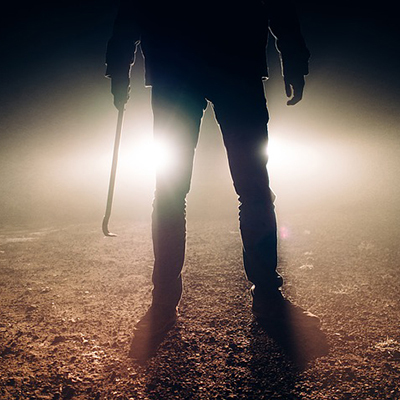 A lot of people always say they’d want a gun, or a sword, during a zombie apocalypse but be honest – do you know how to use one? Do you know how to maintain a gun? And come on, if you live in affluent Chelsea, where will you even come by one? Sure, a sword doesn’t need ammo and they’re quiet, but you still need a bit of skill.
A lot of people always say they’d want a gun, or a sword, during a zombie apocalypse but be honest – do you know how to use one? Do you know how to maintain a gun? And come on, if you live in affluent Chelsea, where will you even come by one? Sure, a sword doesn’t need ammo and they’re quiet, but you still need a bit of skill.
Not so with a crowbar! Swing and a thud, that’s all you need. Plus they’re useful for getting into places that might provide shelter, as well as being relatively light to carry.
3) Plants identification guide
 Once the power goes, any food that needs to be kept refrigerated will need to go. Most people don’t know how to hunt and prepare their own food, so once the canned goods run out, they’ll turn to foraging.
Once the power goes, any food that needs to be kept refrigerated will need to go. Most people don’t know how to hunt and prepare their own food, so once the canned goods run out, they’ll turn to foraging.
Do you know the difference between parsley and water hemlock? Or cherries and belladonna berries? (Hint, the berries in this picture are belladonna…and they’re poisonous!) Best equip yourself!
4) A flint
 You’ll need fire for various reasons (cooking, keeping warm, defence) and matches might get wet, and lighters don’t always work. You might even want to just randomly set fire to zombies but remember they don’t feel pain so they’ll probably just wander about setting fire to other things.
You’ll need fire for various reasons (cooking, keeping warm, defence) and matches might get wet, and lighters don’t always work. You might even want to just randomly set fire to zombies but remember they don’t feel pain so they’ll probably just wander about setting fire to other things.
Learn how to use a flint and keep it handy!
5) Motorbike leathers
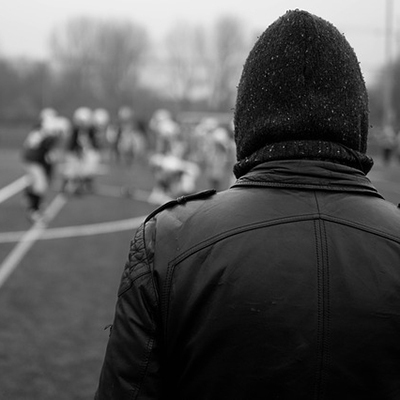 Most people in movies get bitten on their extremities and while a set of motorbike leathers won’t guarantee ultimate protection, they’re tougher than denim and they’ll hopefully keep most bites at bay.
Most people in movies get bitten on their extremities and while a set of motorbike leathers won’t guarantee ultimate protection, they’re tougher than denim and they’ll hopefully keep most bites at bay.
Plus leathers will prevent general cuts and scrapes that’ll be harder to keep clean once you can’t just pop to Boots for a tube of Savlon.
So that’s what I’d like to keep handy! What five items would you keep in your kit?
The post What 5 Items might help you survive a Zombie Apocalypse? appeared first on Icy Sedgwick's Cabinet of Curiosities.
October 9, 2015
Halloween Season – Queens of Twilight
 The inhabitants of Karloff Falls gathered at the single bar on Main Street for the annual Halloween Battle of the Bands contest. Some of the townsfolk wore homemade T-shirts to support their friends or neighbours. Others wore disinterested expressions, there solely due to the lack of anything else to do.
The inhabitants of Karloff Falls gathered at the single bar on Main Street for the annual Halloween Battle of the Bands contest. Some of the townsfolk wore homemade T-shirts to support their friends or neighbours. Others wore disinterested expressions, there solely due to the lack of anything else to do.
MC Marie Festre adjusted her Morticia Addams wig and wiggled onto the stage.
“Good evening, Karloff Falls!”
The crowd yelled a greeting in reply.
“Are you ready for the Battle of the Bands?”
Another shouted affirmation. Marie smiled.
“Well give it up for the Queens of Twilight!”
Isolated pockets of applause were scattered among the silent crowd. Four women shuffled onstage, greeted by stony faces. They looked at each other with dead eyes and shrugged. The tallest woman headed for the microphone, and wrapped bony fingers around the stand. Her skin bloomed pale green under the stage lights.
“What’s up, Karloff Falls?!”
Silence. The singer shot a glance to the guitarist to her right. The guitarist gestured to the crowd. The singer bit her lip and turned back to the audience.
“I’m Elsa, and this is Glenda, Lyra and Rita,” said the singer, pointing to the bassist, guitarist and drummer.
Several fans whooped in the crowd. A man near the front mimed a dramatic yawn. Elsa narrowed her eyes and leaned in towards the mike.
“People keep complaining that music is too manufactured these days. Well, our manager scoured the length and breadth of the state to put us together!”
Elsa’s pronouncement provoked squeals and cheers from the band’s few rabid fans in the crowd. Bored chatter began among the rest of the audience. Lyra picked at the ugly seam that ran up her arm from her wrist to her collarbone. Glenda tightened the bolts in her neck before adjusting the strap of her bass.
“So we say yes, a lot of music is manufactured, but they don’t get more manufactured than us!”
Elsa punched the air to more scattered cheers. Rita and Lyra leaned in to squeal into Elsa’s microphone and the band launched into their first number, Little Lightning Bolt.
Their manager waited in the wings, smiling as the band’s raucous blend of punk and 50s rock n roll won over the more skeptical patrons in the crowd. He twiddled the ring on his little finger, caressing the Frankenstein family crest set in gold.
The Queens of Twilight finished their first song to screams for more.
Their manager smiled. Great-great-great-grandfather would be so proud.
The post Halloween Season – Queens of Twilight appeared first on Icy Sedgwick's Cabinet of Curiosities.
October 5, 2015
5 Classic Horror Movies to watch this Halloween
It’s October so we’re now officially into the Halloween Build-up! Each Monday I’m going to post horror related content, and this week we’re looking at classic horror movies! There are various arguments about what year ‘modern horror’ begins, which will be another post for another time, but for this post I’m going with the 1968 cut off point.
Classic horror doesn’t have the guts and gore of the Saw franchise, and you can forget the never-ending Paranormal Activity cycle with its endless shaky cam and wooden dialogue, here are five classic horror movies that I think you should watch this Halloween!
The Haunting (1963)
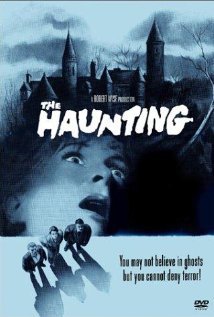 You wouldn’t think that two years later, director Robert Wise would go on to make The Sound of Music, so chilling and creepy is The Haunting. Based on the Shirley Jackson novel, ‘The Haunting of Hill House’, this film tells the story of a parapsychologist who assembles a group of volunteers at the vengeful Hill House in an attempt to discover proof of the supernatural.
You wouldn’t think that two years later, director Robert Wise would go on to make The Sound of Music, so chilling and creepy is The Haunting. Based on the Shirley Jackson novel, ‘The Haunting of Hill House’, this film tells the story of a parapsychologist who assembles a group of volunteers at the vengeful Hill House in an attempt to discover proof of the supernatural.
Eleanor ‘Nell’ Vance (Julie Harris) is the most susceptible to the influence of the house, and slowly begins to unravel as it works its eerie magic on her. The biggest star of the film is perhaps Hill House itself, but there is no awful CGI (as there was in the 1999 remake), just good old fashioned sound effects and taut tension!
Night of the Demon (1957)
 This is an often underrated little gem, based on the short story ‘Casting the Runes’ by M. R. R. James. Also known as Curse of the Demon, Night of the Demon tells the story of psychologist Dr Holden (Dana Andrews) who is cursed by occult practitioner Dr Karswell (Niall MacGinnis). Skeptical Holden soon learns to put his cynicism aside as he must figure out a way to undo the curse and thus save his life.
This is an often underrated little gem, based on the short story ‘Casting the Runes’ by M. R. R. James. Also known as Curse of the Demon, Night of the Demon tells the story of psychologist Dr Holden (Dana Andrews) who is cursed by occult practitioner Dr Karswell (Niall MacGinnis). Skeptical Holden soon learns to put his cynicism aside as he must figure out a way to undo the curse and thus save his life.
Directed by Jacques Tourneur, who also directed the 1942 classic Cat People, the film uses shadows and suggestion to hint at an occult world alongside our own, a place where logic and reason have no effect, and demonic forces lurk. The plotline was later re-used in the utterly unforgettable Drag Me To Hell (2009).
Dracula (1958)
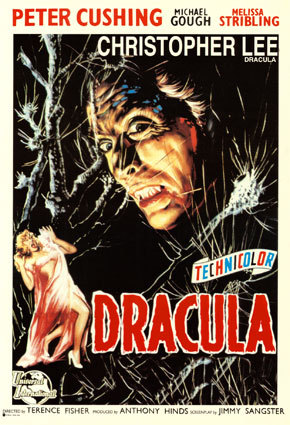 There have been many representations of the Count, and while Bela Lugosi’s 1931 turn is perhaps the most iconic, my favourite is that of the late Christopher Lee, in his second outing for Hammer Films. Jonathan (John Van Eyssen) is a vampire hunter bent on Dracula’s destruction, but after he kills the Count’s bride (Valerie Gaunt), Dracula decides to steal Jonathan’s fiancee Lucy (Carol Marsh) as revenge. Enter the indomitable Peter Cushing as Van Helsing to set matters right.
There have been many representations of the Count, and while Bela Lugosi’s 1931 turn is perhaps the most iconic, my favourite is that of the late Christopher Lee, in his second outing for Hammer Films. Jonathan (John Van Eyssen) is a vampire hunter bent on Dracula’s destruction, but after he kills the Count’s bride (Valerie Gaunt), Dracula decides to steal Jonathan’s fiancee Lucy (Carol Marsh) as revenge. Enter the indomitable Peter Cushing as Van Helsing to set matters right.
Where Lugosi was the consummate foreigner, Lee brought English nobility and poise to the role. Both charismatic and dominant, Lee’s Dracula paved the way for the many seductive versions of the Count that would come plater. Plus Peter Cushing is just too cool as Van Helsing.
Bride of Frankenstein (1935)
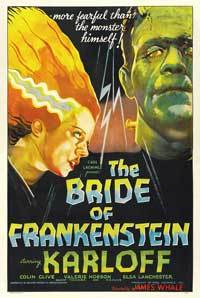 It was the earlier Frankenstein (1931) that turned Boris Karloff into a star, but the 1935 sequel was director James Whale’s masterpiece. Brimming with dark humour and crackling with the intensity of Colin Clive’s performance as the prototypical mad scientist, Bride tells of Frankenstein’s decision to build a mate for his erstwhile creation.
It was the earlier Frankenstein (1931) that turned Boris Karloff into a star, but the 1935 sequel was director James Whale’s masterpiece. Brimming with dark humour and crackling with the intensity of Colin Clive’s performance as the prototypical mad scientist, Bride tells of Frankenstein’s decision to build a mate for his erstwhile creation.
Frankenstein’s focus on his artificial woman at the expense of his wife led many to assume the creature’s mate was Frankenstein’s own bride, and Elsa Lanchester’s hair and costume at the film’s climax has become truly iconic. Karloff brings pathos and humanity to his role, turning the Monster into a pitiable creation, while Clive’s twitchy performance has never been bettered. Classic horror at its absolute finest.
Black Sunday (aka The Mask of Satan, Revenge of the Vampire) (1960)
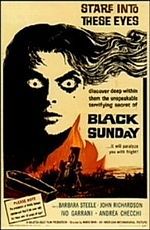 Starring the incomparable Barbara Steele as evil witch Asa, Black Sunday is an Italian classic horror from director Mario Bava. Full of family curses, a heroine who is the physical double of the evil witch, and a villainness intent on immortality, the film is Gothic excess at its absolute finest.
Starring the incomparable Barbara Steele as evil witch Asa, Black Sunday is an Italian classic horror from director Mario Bava. Full of family curses, a heroine who is the physical double of the evil witch, and a villainness intent on immortality, the film is Gothic excess at its absolute finest.
Horror is normally more synonymous with male performers, such as Vincent Price, Christopher Lee or Boris Karloff, and Barbara Steele was one of the few actresses who carved out a niche playing seductive but evil monsters. Playing the dual role of Asa and her descendant Katia gave Steele the opportunity to show off her dramatic range, and she certainly turns in a memorable performance in this film which manages to be both cheesy yet highly effective.
What classic horror films would you recommend?
The post 5 Classic Horror Movies to watch this Halloween appeared first on Icy Sedgwick's Cabinet of Curiosities.
September 28, 2015
How to cope with rejection as a writer
 There are few things guaranteed in life, but if you’re a writer, then at some point or other, you’re sure to encounter rejection. No matter what you’re submitting, sooner or later, you’ll get some form of reply saying “Thanks, but no thanks.” It’s hard, I know, but it’s something every writer goes through.
There are few things guaranteed in life, but if you’re a writer, then at some point or other, you’re sure to encounter rejection. No matter what you’re submitting, sooner or later, you’ll get some form of reply saying “Thanks, but no thanks.” It’s hard, I know, but it’s something every writer goes through.
Picture the scene. You’ve spent so much time on your masterpiece that your family have forgotten your name, and you’ve finally released it off into the world. One day, an email/letter arrives. Could it be? You open it… and the excitement falls flat when you find the dreaded rejection slip. Unless you’ve been lucky enough to get a personalised reply with feedback, you may sit there in disbelief, wondering what was wrong with the piece. Sadly, the chances are – you’ll never know.
So here are five things to bear in mind, and to hopefully remove the sting!
It doesn’t mean you’re a bad writer
It’s easy to assume that a rejection means you’re a terrible writer but just because one editor or agent doesn’t like your work doesn’t mean no one will. I once submitted a piece of flash fiction to one magazine to have it rejected, only to submit it elsewhere and have it accepted within twelve hours. The phrase, ‘One man’s meat is another man’s poison’, springs to mind.
So don’t panic. Maybe you sent the work out before it was ready. Perhaps you need a little longer to hone your craft. It’s also possible that your work wasn’t to the editor’s taste, or maybe they liked it, but it just wasn’t what they were looking for at that time. Sometimes stories are rejected simply because an editor has recently accepted something similar.
The Editor is Not Rejecting YOU
It’s also easy to assume that the rejection is not of your work, but of you personally. Writers find it difficult to extricate themselves from their work, and sometimes take criticism of their writing as a criticism of themselves as people. It’s hardly surprising, given how much of a person goes into the act of writing.
All I can say is try not to take the rejection of your work as a rejection of you – think about how many writers whose work you don’t like. Do you dislike them as people? No, you don’t even know them. It’s the same for editors and agents.
If You Can’t Say Anything Nice…
Resist bitching about the title online. Some editors have either their own names or the names of their publications set up as Google Alerts. They may not have told you so, but your piece may have been rejected simply because it wasn’t a good fit for the theme of their next issue, and future work may have stood a better chance. If you badmouth them, you risk blacklisting yourself for good.
Come Back to It Later
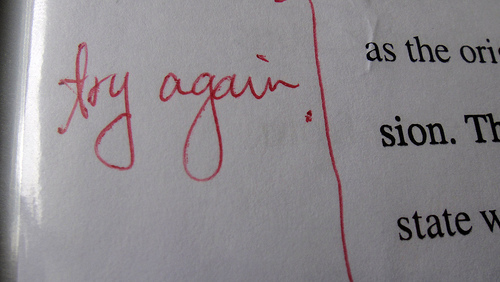 Put the story aside for a few days and work on something new. Try switching it up a little – if you normally write in first person, try third. If you normally write in past tense, try present. Come back to your rejected piece with fresh eyes (and the perspective that comes with distance) and give it another read. Can you spot any structural problems? Could your phrasing be tightened up? Have you over-used clichés that could be reworked into something more unique? If you were lucky enough to get feedback, can you see the points the editor is trying to make?
Put the story aside for a few days and work on something new. Try switching it up a little – if you normally write in first person, try third. If you normally write in past tense, try present. Come back to your rejected piece with fresh eyes (and the perspective that comes with distance) and give it another read. Can you spot any structural problems? Could your phrasing be tightened up? Have you over-used clichés that could be reworked into something more unique? If you were lucky enough to get feedback, can you see the points the editor is trying to make?
Try and Try Again
Have you got a trusted band of writer friends who can act as beta readers? Two (or more) heads are much better than one, so if they’ve looked over your piece and given you comments, then you might want to try submitting again. After you’ve made a list of possible titles, check their submission guidelines. Are they actually open to submissions? Do they have a preferred formatting style (font/size/line spacing etc.)? Do they accept multiple or simultaneous submissions? Do they have a minimum, or maximum, word count? Have you read other stories published by them? After all, your romantic epic might be perfect as it is, but it’s no good sending it to a science fiction magazine. These guidelines apply to everyone – don’t assume you’re the exception to their rule.
Submit – and Good Luck!
If you’ve done all this, then get submitting again. Just remember that your story is perfect for someone – you just have to find them!
Please share your thoughts and stories of rejection (and triumph!) in the comments section below.
The post How to cope with rejection as a writer appeared first on Icy Sedgwick's Cabinet of Curiosities.
September 25, 2015
#FridayFlash – The Eyes That See

The swing band in the corner fought for attention over the din of chatter in the hall. Women in furs quaffed champagne as their menfolk told dreary jokes and ignored the exhibits. Gabriel scowled at them – no appreciation for history at all. He’d assembled the finest pieces ancient Egypt could offer, and they were more interested in society gossip.
Marie St John sashayed up to him, all shining eyes and pearl strings. Marie’s mother was one of Gabriel’s greatest supporters, although she might not invest as much if she found out about his tiny crush on her daughter.
“Gabriel, darling. Splendid show you’ve put on.” She kissed both of his cheeks, leaving scarlet imprints like plague posies beside his mouth.
“I’m glad you approve, Miss St John. Your mother had a lot to do with this. So sorry she couldn’t be here tonight,” replied Gabriel.
“She’ll come along and see it in a few weeks when she’s back from Paris, I expect.”
Gabriel nodded. Mrs St John’s other daughter lived in France, and felt obliged to help out now the war was over. Pity she wasn’t in Paris in 1940 – the Germans wouldn’t have stood a chance.
“So has anything in particular caught your eye?” asked Gabriel.
“The jewellery is fascinating.” Marie looked across the room at a large glass case. Women clustered around it, cooing over the ornate collars and gold bands.
“Very different from what you wear.” Gabriel nodded to the Lalique brooch on her dress.
“I daresay Mother would wear it!”
Gabriel laughed. Mrs St John was no shrinking violet, and it was easy to picture the mountain of a woman draped in white linen, and dripping with Egypt’s finest. Marie smiled and looked away, her eyes roving the crowd. Feeling his chance slip away, Gabriel laid a hand on Marie’s arm.
“Have you seen this piece?” asked Gabriel. He steered Marie through the crowd towards a glass case set on a plinth in the middle of the room. A wooden box lay inside the case. Scenes of Egyptian life were painted on three sides, with hieroglyphics adorning the lid. One side was blank, except for a pair of painted eyes.
“What is it?” asked Marie. She wrinkled her nose.
“A coffin.”
“I thought mummies came in things like that,” said Marie. She pointed across the room to a brightly painted sarcophagus. A young man lounged against the case containing the sarcophagus, a cigarette in one hand and a cocktail glass in the other. Gabriel frowned.
“Later ones did from around 1550 BC. Before that, coffins were rectangular. The mummy lay inside on its side, facing the east, and the eyes were painted on so it could ‘see’ out,” said Gabriel. He pointed to the eyes. Marie shuddered.
“That’s awful.”
“Why do you say that? It’s no different from burying a body in the hope it’ll be resurrected on Judgement Day.”
“Is there a body in there?” Marie stared at the box, her rosebud mouth turning down at the corners.
“I daresay there is. I don’t believe in opening them up.”
“So you brought me over here for a dead body in a box?”
“I thought you might be interested. It’s not every day you come this close to an ancient civilisation.”
“Indeed. If you’ll excuse me.” Marie tossed her head and stalked away, heading for the throng of young men around the statue of a bare-breasted goddess.
Gabriel sighed. He thought Marie had the same fascination for history as her mother. Still, he’d been wrong about women before. Two ex-wives proved that.
“I despair of humanity sometimes. I’m so sorry you had to witness that,” said Gabriel, laying one hand on the glass case.
He looked down at the coffin. The eyes on the box blinked.
The post #FridayFlash – The Eyes That See appeared first on Icy Sedgwick's Cabinet of Curiosities.
September 21, 2015
The Beauty of Ghost Signs

© Icy Sedgwick 2015
In my day job as a graphic design instructor, we’ve been running a project for our returning students about found typography. It got me thinking about my love for ghost signs! We used to have a brilliant one for Jack Daniel’s in Newcastle, until someone installed a brand new billboard over it. They’re a fantastic link to the past, and in a lot of cases I think they should actually be preserved properly.
Take the photo to the left – the building is now the Tyne Theatre on Westgate Road but the sign on the wall advertises it as being the Stoll, ‘Tyneside’s Talkie Theatre’. The original theatre was converted in 1919, and became the Stoll Picture Theatre on 2 June that year. Incidentally, it was the first cinema in Newcastle to show ‘talkies’. The rise of television saw its decline and it closed in 1974. Luckily a campaign was started to save the building, and it was converted back to a theatre and it reopened in 1977. It’s a little slice of cinematic history, right there on the street!
But Icy, what are ghost signs?
Glad you asked! Ghost signs are those advertisements for long gone products or places that exist, often on gable ends, on older buildings. The services they advertise no longer exist but through a bizarre quirk of preservation, the signs remain. There are an abundance of them in London, out of the way but not out of mind, while they can be found across America, France, and even further afield.

Paul McIlroy, via Wikimedia Commons
This ghost sign from Dunfermline, Scotland, advertises Angus Campbell Ltd, ‘for all motor cycles, scooters & three wheelers’, on the side of a building now occupied by a second hand store of some description. The shop frontage has moved with the times, with new signs being added when the business changed hands, but the original proprietor remains present, haunting the property through the perpetuation of his name, painted on the gable end. The lettering recalls the typographic choices of the 1930s, and while the scooter and the three wheeler are vehicular choices of the 1950s and 1970s, it’s difficult to really ‘date’ the sign properly. What strikes me is that the name has not been painted over, or covered with something else.
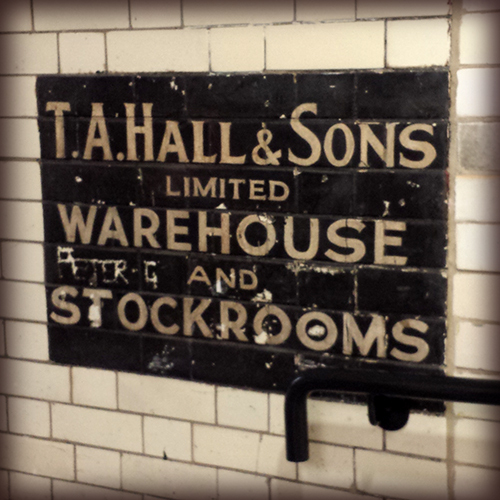
© Icy Sedgwick 2013
I found this ghost sign in Newcastle, inside the Baltic 39 studios on High Bridge. A quick search on Google reveals that T. A. Hall & Sons Ltd occupied the Grade II listed building at 31-39 High Bridge, until the former printing warehouse was converted into a public gallery and studio space, operated by the BALTIC Centre for Contemporary Art. The interior of the building might be swathed in Baltic’s black and concrete staircases, but the walls remain the white tiles of the warehouse, with this sign the final testament to the building’s former use. Strictly speaking, the term ‘ghost sign’ refers to adverts that had been painted directly onto the brickwork of a building, but this sign should still be included as it is painted directly onto the internal tiles and advertises a company who is no longer there.
Why do ghost signs matter?
Ghost signs are tangible, and they record something that no longer exists. Just as photographs or movies can capture the likenesses of people, preserving them for posterity, so ghost signs remind of us products or stores that existed before Google and Yell.com, when a visible advert in a prominent place was the best way to alert passersby to your presence, or products. The introduction of the billboard in the 1950s rendered such signs obsolete, and the switch from brick to glass or concrete as the construction material of choice surely added to their demise, too.
It’s easy to erase or misdirect a digital footprint, and the continuing presence of these ghost signs is both comforting, and disquieting. They bring ghosts among us, a quiet testament to days gone by, reminding us of simpler times, while intruding upon a visual culture that has no place for hand-painted adverts on brick. They’re poignant in the paradox of their existence – the point of an advert is to tell us about something, but when that ‘something’ no longer exists, what use do we have of the advert? Some of the signs now appear divorced from their context, as the world changes around them. Without their purpose, is their meaning now obscured, or do they retain a purpose, albeit a new one?
Often advertising mundane products, or home grown businesses, ghost signs a monument to those who have gone before, and a fascinating glimpse into a world that all the websites in existence can never truly recreate.
Do you have ghost signs in your town? Leave a photo in the comments below!
The post The Beauty of Ghost Signs appeared first on Icy Sedgwick's Cabinet of Curiosities.



